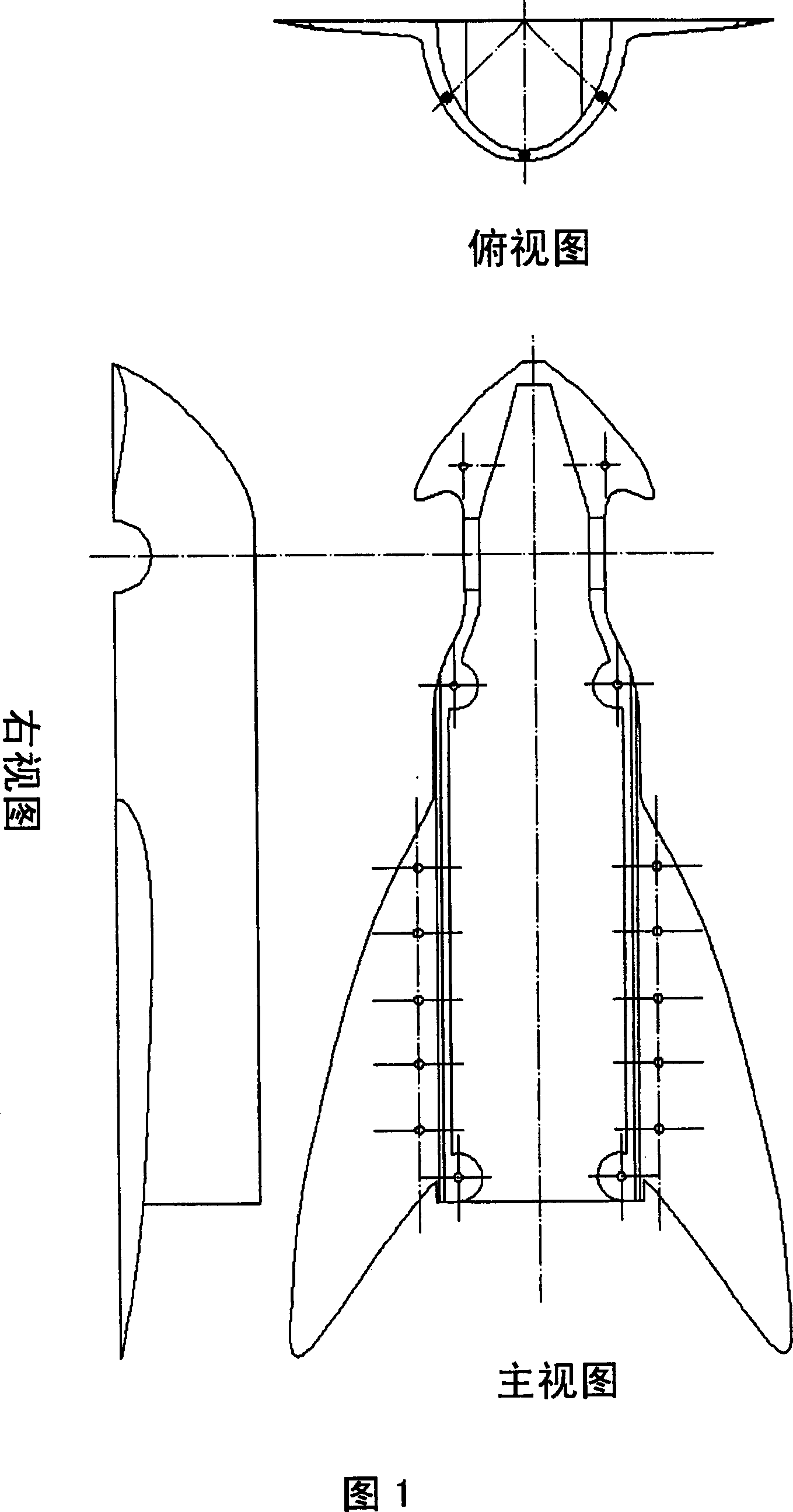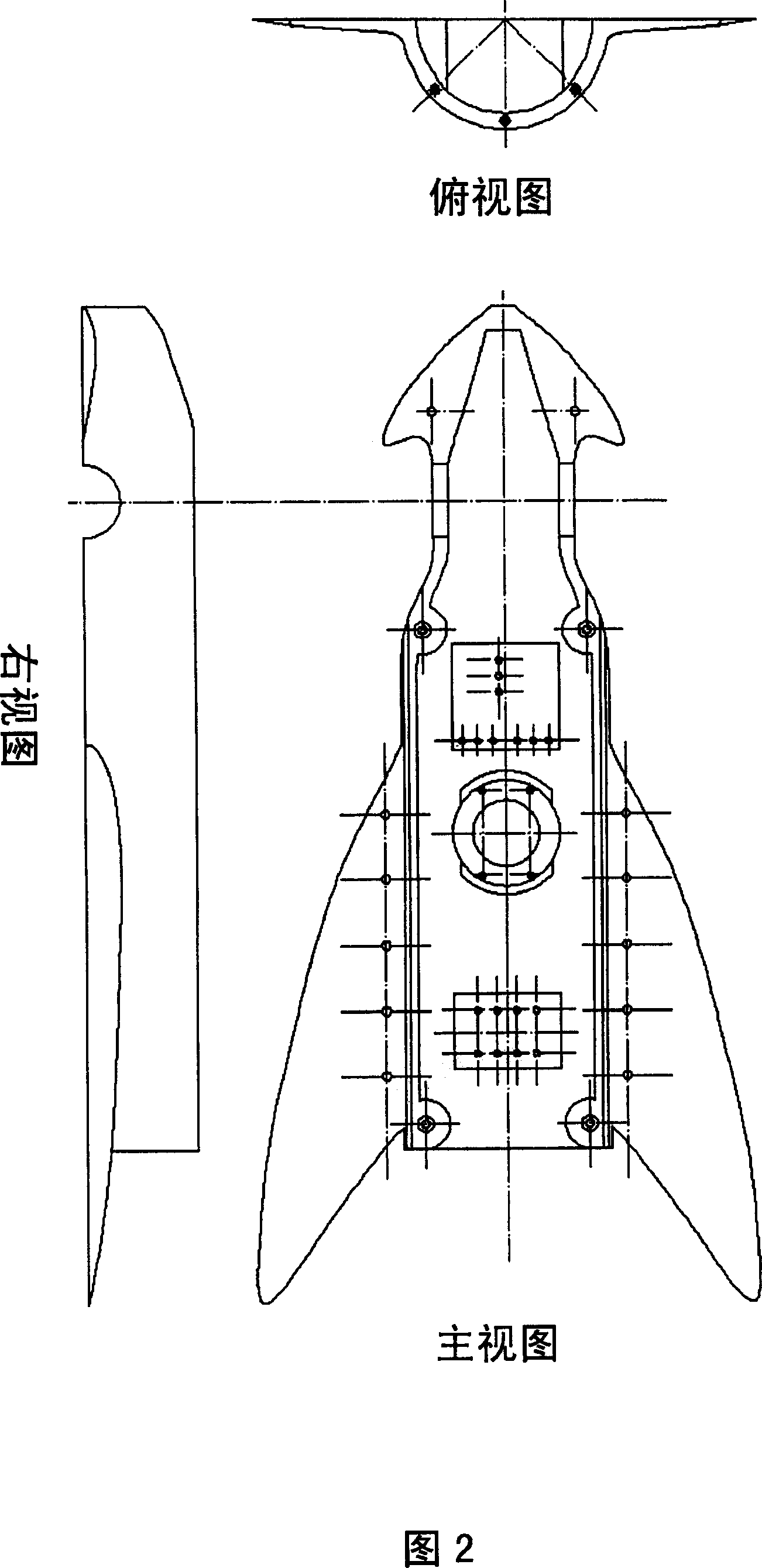Bionic robot fish
A technology of robotic fish and fish body, which is applied in the field of bionic robotic fish, can solve problems such as complex mechanism, combination of pectoral fin and tail fin, difficulty in floating in water and precise depth control, etc., to achieve high maneuverability, compact structure and realistic appearance Effect
- Summary
- Abstract
- Description
- Claims
- Application Information
AI Technical Summary
Problems solved by technology
Method used
Image
Examples
Embodiment
[0044] According to the mechanical structure and control circuit structure described in the present invention, a bionic robot fish is produced. The shell is made of fiberglass hand lay-up process, the tail of the robot fish is fixed on it, the pectoral and caudal fins are made of nylon, and the fish skin is made of latex. After installing and fixing all the mechanisms and connecting all the control lines, the connection between the upper and lower shells is sealed with a labyrinth, and the joints between the shell and the pectoral fin, tail, and buoyancy adjustment device are sealed with O-rings, and then the upper and lower shells are connected with screws. , put the fish skin on the fish shell and seal it with rubber glue to obtain the real object. The control circuit is implemented as shown in Figure 8, using the AVR single-chip microcomputer as the microcontroller, and the lithium rechargeable battery as the power supply for the control circuit, motor, sensor, etc. 3 chan...
PUM
 Login to View More
Login to View More Abstract
Description
Claims
Application Information
 Login to View More
Login to View More - R&D
- Intellectual Property
- Life Sciences
- Materials
- Tech Scout
- Unparalleled Data Quality
- Higher Quality Content
- 60% Fewer Hallucinations
Browse by: Latest US Patents, China's latest patents, Technical Efficacy Thesaurus, Application Domain, Technology Topic, Popular Technical Reports.
© 2025 PatSnap. All rights reserved.Legal|Privacy policy|Modern Slavery Act Transparency Statement|Sitemap|About US| Contact US: help@patsnap.com



